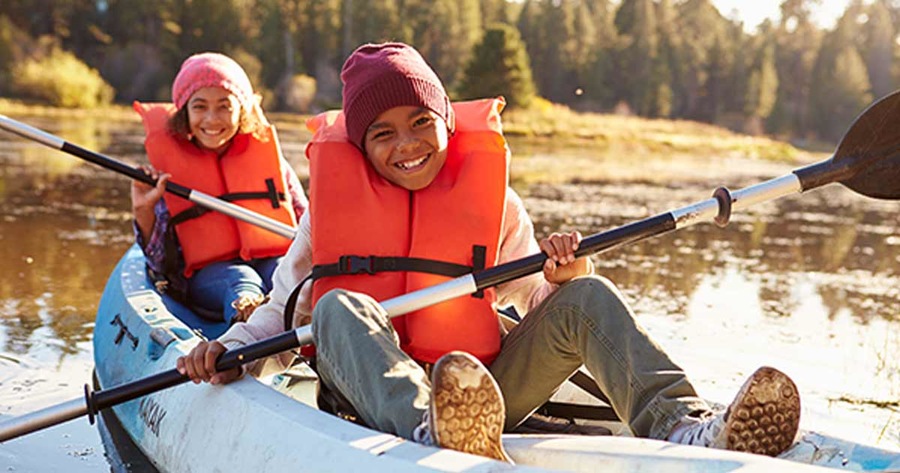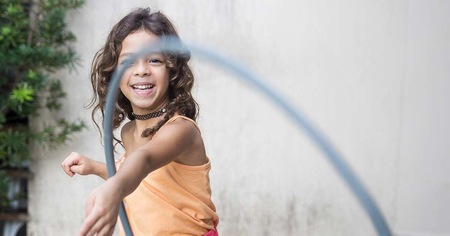That's the question nearly 100 out-of-school time professionals answered as they worked with colleagues from across the U.S. at the spring National Afterschool Association Annual Convention. Ellen Sandseter, one of the well-published researchers on risky play and a child's need for adventure, identified six types of risky play that children and youth crave:
- Handling dangerous tools.
- Being near dangerous elements (like fire or water).
- Exploring heights.
- Exploring speed.
- Rough-and-tumble play.
- Playing on one's own.
Programs are already providing adventurous experiences for their youth. These range from mildly adventurous activities, like yoga and digging for worms in a community garden, to more venturesome experiences like being off-site for a 5K or trying an Escape Room. One New York City program even had their younger elementary kids climb rocks, to see all the way from the Bronx to the Empire State Building!
The range of experiences that staff reported was wide and it was clear that the perception of risk also varied. Swimming lessons were placed on the adventure continuum anywhere from mildly to highly adventurous. This may be because as children age or as they have more experience, swimming becomes less "risky." But as a first-time experience or in a new setting, it is particularly adventurous. Compare the weekly experience of swimming in the neighborhood community pool to swimming in a mountain lake or the ocean for the first time.
Joe Frost, one of the first advocates for playground safety, wrote, "Reasonable risks are essential for children's healthy development."
It was refreshing to read that some youth programs provide opportunities for children to try fencing, light campfires—without matches or lighters—and live in a cave for several days. Some of the experiences were geo-specific, like ice climbing and tanning deer hides. Others could happen in most OST programs—use of real tools, martial arts classes, field trips to a pro-sports stadium, powerlifting, orienteering, birding, fishing or nature walks in a local preserve.
Some programs may be hesitant to offer adventure opportunities because of the risk of injury, but according to a systematic review of 21 research studies on risky play, the vast majority of risky outdoor play-related injury incidents result in minor injuries requiring minimal or no medical treatment.
Early childhood expert Deb Curtis challenges people to reverse their thinking and ask, "What risks do we take if we don't help children negotiate risks?"
Psychologist and researcher Peter Gray explains that risky, adventurous play allows youth to learn to regulate their emotions. Each time a "novel" experience presents itself, they learn to navigate their fight/flight/freeze responses. They learn that they can "manage their fear, overcome it, and come out alive."
Additional research highlights other benefits of adventure experiences, like improved physical balance and sensory integration, ability to focus, social and communication skills, and more. The more intentional staff are about paying attention to the components of an adventure experience and facilitating reflection during and after the experience, the greater the impact on a youth's life skill development.
If your staff is ready to discuss adventure programming, Better Kid Care's On Demand module "Adventurous Play: The Whys and Hows" can provide some helpful tools and examples. If you are planning adventure trips, this field trip planning timeline and safety checklist can make sure you are well prepared.
Written by Rebecca A. Escott, Early Learning/Out of School Time Specialist, Penn State Better Kid Care.
References:
Brussoni, Mariana, Rebecca Gibbons, Casey Gray, Takuro Ishikawa, Ellen Sandseter, Adam Bienenstock, Guylaine Chabot, Pamela Fuselli, Susan Herrington, Ian Janssen, William Pickett, Marlene Power, Nick Stanger, Margaret Sampson, and Mark S. Tremblay. 2015. "What is the Relationship between Risky Outdoor Play and Health in Children? A Systematic Review." International Journal of Environmental Research and Public Health 12(6): 6423-54. DOI: 10.3390/ijerph120606423
Curtis, Deb. 2017. Really Seeing Children. Redleaf Press.
Deane, Kelsey L., and Niki Harré. 2014. "The Youth Adventure Programming Model" Journal of Research on Adolescence 24, no. 2: 293-308.
Frost, Joe L. 2006. "The Dissolution of Children's Outdoor Play: Causes and Consequences" Common Good Conference 31(1).
Gray, Peter. 2011. "The Decline of Play and the Rise of Psychopathology in Children and Adolescents" American Journal of Play 3(4).
Sandseter, Ellen B., and Leif E. Kennair. 2011. "Children's Risky Play from an Evolutionary Perspective: The Anti-Phobic Effects of Thrilling Experiences" Evolutionary Psychology 9(2): 257-284. DOI: 10.1177/147470491100900212
Photo courtesy of UNL/Better Kid Care PYD.




